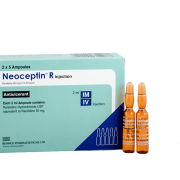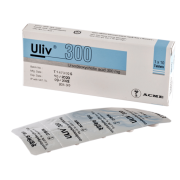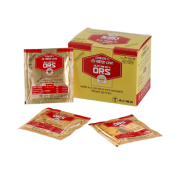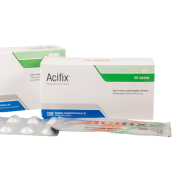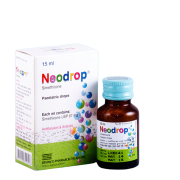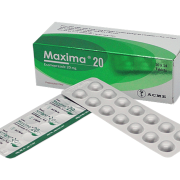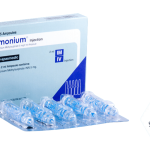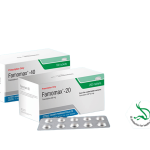Famomax
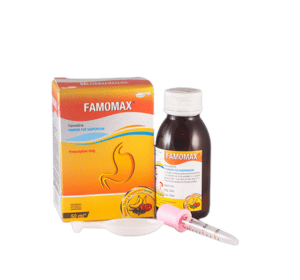
Generic Name: Famotidine
Dosage Form: Tablet, Powder for Suspension
TG Name: Gastrointestinal
1. What is Famomax®?
Famomax® (100 ml powder for suspension) is a potent competitive H2- receptor antagonist consisting of famotidine which reduces the acid and pepsin content, as well as the volume of basal, nocturnal and stimulated gastric secretion.
2. How Famomax® works in our body?
Activation of H2 receptors located on parietal cells stimulates proton pumps to secrete acid into the stomach lumen. Famomax®, an H2 antagonist, blocks the action of histamine on the parietal cells, ultimately reducing acid secretion into the stomach.
3. What is the indication of Famomax®?
Famomax® is indicated in
- Gastroesophageal reflux disease (GERD).
- Dyspepsia.
- Peptic Ulcer.
4. What are the dosage & administration of Famomax®?
Gastroesophageal reflux disease (GERD):
Less than 3 months: 0.5 mg/kg orally once a day for up to 8 weeks.
3 Months to less than 1 year: 0.5 mg/kg orally 2 times a day for up to 8 weeks
1 year to 16 years: 0.5 mg/kg/day orally 2 times a day. Maximum dose: Up to 40 mg/dose.
Dyspepsia: 0.5 mg/kg orally once daily.
Peptic ulcer: 0.5 mg/kg orally once daily or divided in twice daily up to 40 mg/day.
Dosage can be administered irrespective of meals.
5. What are the contraindications of Famomax®?
There are no known contraindications to Famomax®. If any evidence of hypersensitivity appears, discontinue the therapy and consult with your physician.
6. What are the adverse effects of Famomax®?
Famomax® is generally well tolerated and side effects are uncommon. Dizziness, constipation and diarrhoea have been reported rarely. Other side effects reported less frequently include dry mouth, nausea and/or vomiting, rash, abdominal discomfort, anorexia and fatigue.
7. What would be the storage condition of Famomax®?
Keep in a dry place and store below 30°C. Protect from light and keep out of the reach of children.




